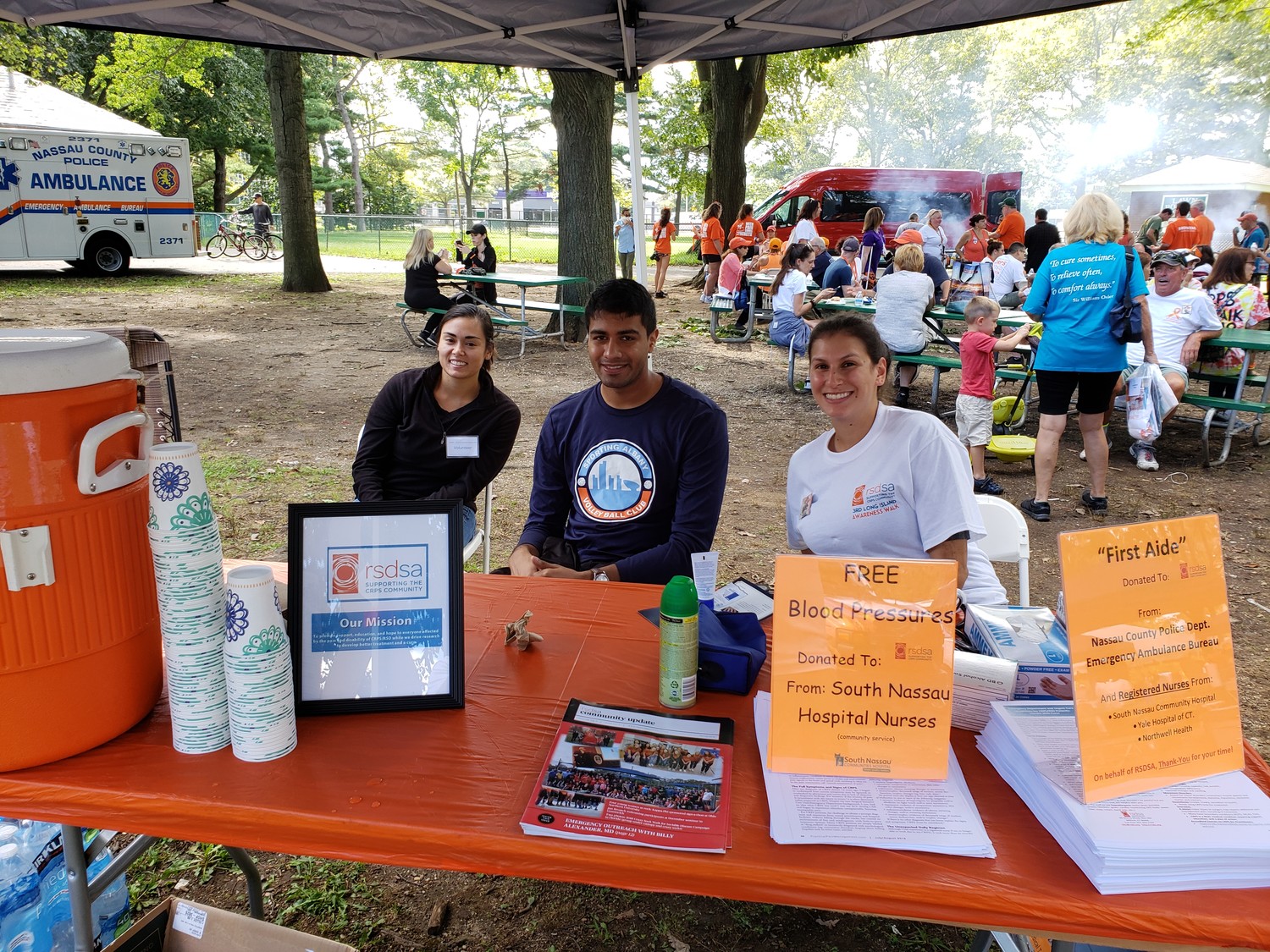RSDSA fosters community of support at third annual walk
The Reflex Sympathetic Dystrophy Syndrome Association helped spread awareness and teach hundreds about the rare disease at its third annual walk at Eisenhower Park on Sept. 15.
“It makes me so happy to see that we are making a difference to educate others and provide a network of support,” said Stacey Udell, the co-chair of the event. RSDSA or Complex Regional Pain Syndrome is a disabling and debilitating neuro-inflammatory disorder that Udell called insidious as it does not always show on the exterior.
Recently, Udell received a call from a 93-year old woman who has all the signs and symptoms of the disease, but has never been diagnosed and simply referred to her ailment as “Burning Man” syndrome.
“She was so elated to learn that her problem has a name, and a community of support,” Udell said.
RSDS occurs when the nervous and immune systems malfunction in response to tissue damage from trauma, such as nerve or musculoskeletal injury, surgery, or immobilization. There is currently no cure, effective form of treatment and diagnosis often takes months and sometimes even years, according to Jim Broatch, the executive director of the RSDSA.
“There are so many people affected by it and it’s important for people to realize that there’s support out there,” Udell added. At the walk, participants unified to raise awareness, fund better treatments, and find a cure for the syndrome. Based out of Milford, Connecticut, the organization has been holding its walk for several years in Central Park before expanding and moving to East Meadow.
Because of the rarity of the syndrome, Broatch explained that many patients are not receiving effective treatment. Obstacles include accruing funding and proper medication, as there is no medication solely used to treat the syndrome.
Recently, however, strides were made in treating syndrome as it received national recognition as a “rare disease,” giving pharmaceutical companies the ability to extend experimental trials and test new medications known as bisphosphonates, including ketamine. Broatch said that this gives him hope for the future, but, as of now, there is much more to be done to support those living with the syndrome.
Educational resources, sponsors, and health professionals were on hand during the walk, along with entertainment, raffles and craft activities for children. While this year’s donations are still coming in, the event drew 500 participants and raised over $8,000 already.

 49.0°,
Fair
49.0°,
Fair 




